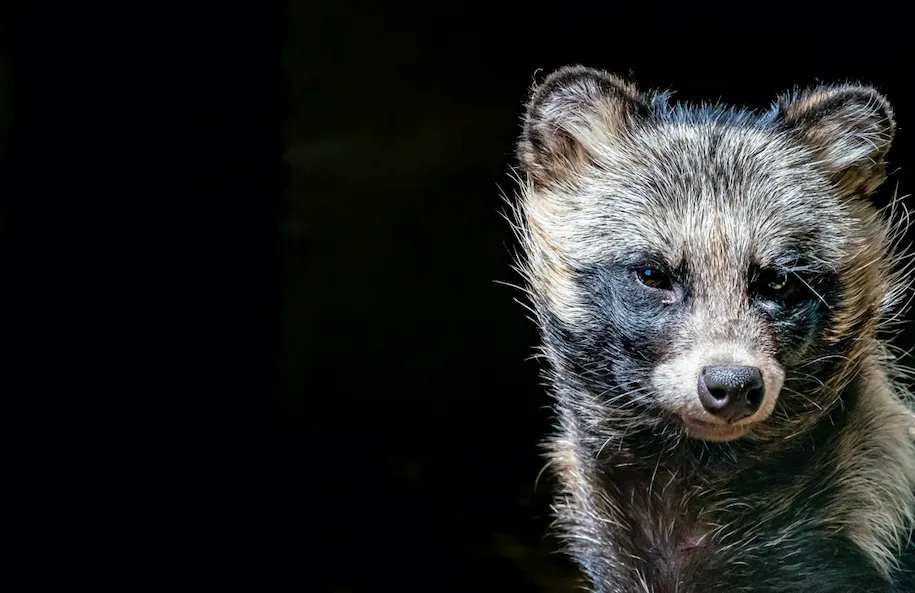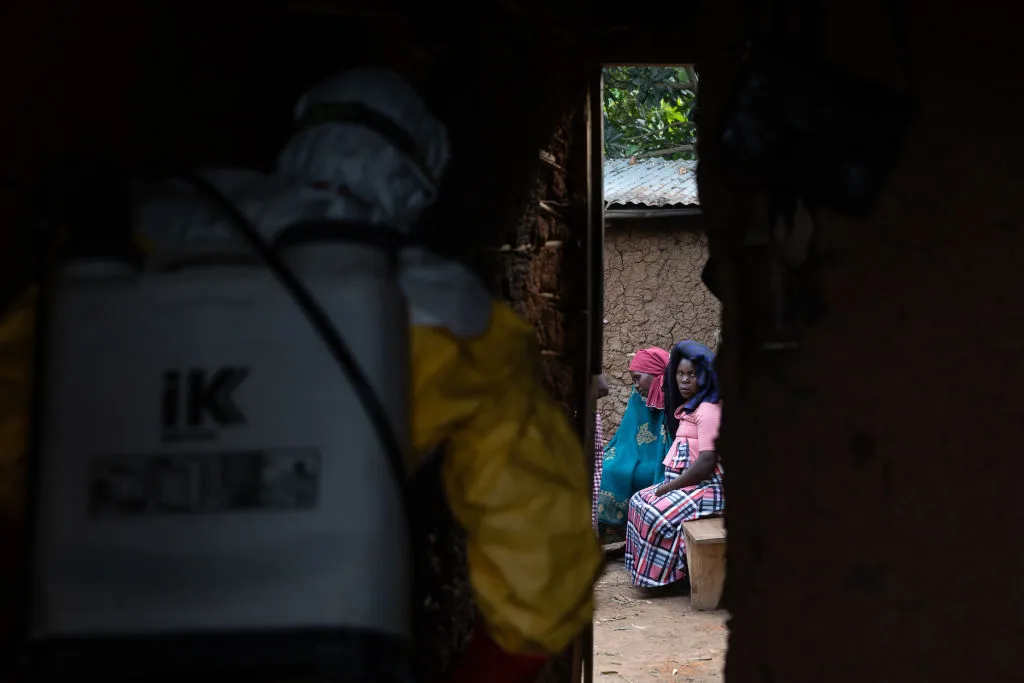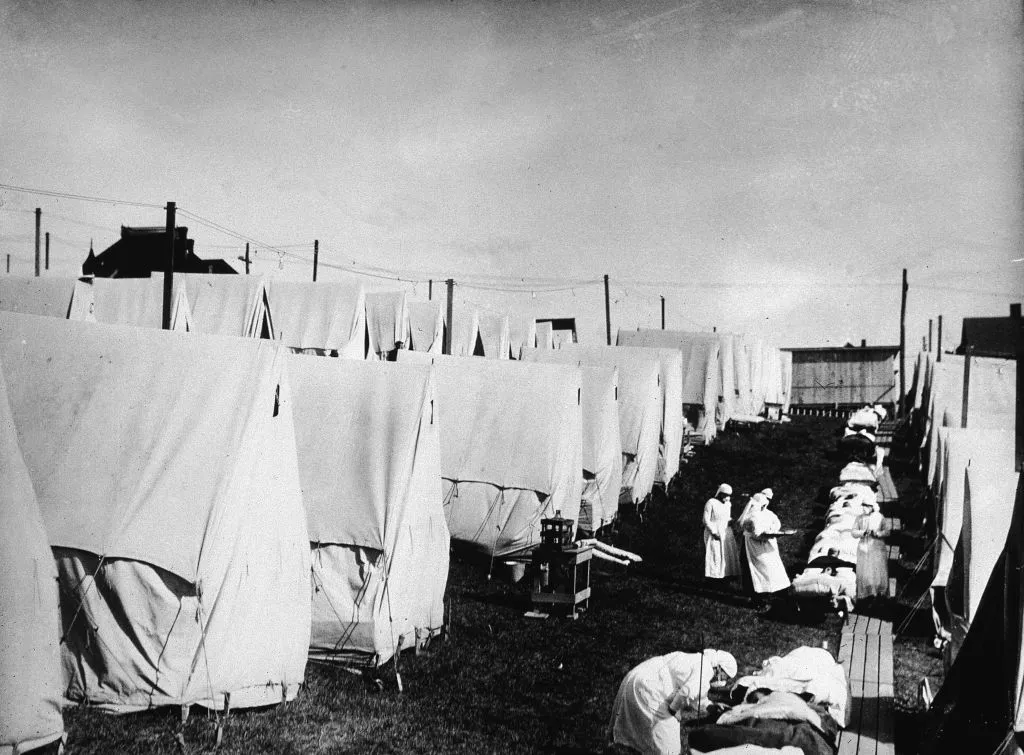In the aftermath of an infectious disease outbreak, scientists often become detectives on the hunt for a culprit — and it’s not uncommon for different researchers to butt heads.
In 1994, a study emerged that blamed the AIDS outbreak on contaminated polio vaccines administered in Equatorial Africa between 1957 and 1959. A decade later, the theory was discredited.
Now, more than three years into the COVID-19 pandemic, the debate swirling around the coronavirus’ birthplace — a lab leak versus a wild animal market — is still just heating up.
Last week, a group of virus experts announced that swabs of genetic materials recovered from the Huanan Seafood Market in Wuhan, China, tested positive for SARS-CoV-2 and were linked to raccoon dogs. The researchers noted, however, that the new evidence doesn’t confirm the long-held theory that the virus made the jump from animals to humans at the market, because it’s not clear how the raccoon dogs got infected in the first place.

The findings came on the heels of recent news that the U.S. Energy Department concluded with “low confidence” that the virus was instead leaked from a Wuhan lab. In the agency’s assessment, revealed in a classified intelligence report, the department sided with the FBI, which also blamed a lab leak in 2021.
These conflicting reports demonstrate how the quest to pin down COVID’s patient zero has spread well beyond the scientific community into the political, governmental and foreign relations arenas, which further complicates efforts to build consensus.
And while COVID’s true cause remains a mystery, one aspect of the debate is clear — origins matter. If healthcare institutions are going to properly prepare for the next pandemic, understanding where the risks lie is critical.
In a 2010 study on the origin of pandemics, researchers concluded that “most emerging diseases stem from the transmission of pathogenic agents from animals to humans.” The authors of a 2022 report published by the Council on Foreign Relations blamed every viral pandemic since 1900 on “spillover” from animals to humans, and warned that as climate change transforms migratory patterns for many animals, this problem could grow.
Of course, that doesn’t mean a lab leak isn’t possible.
“A pandemic with a laboratory origin scenario could initiate with either the accidental infection of an individual or individuals by a pathogen in a laboratory setting, or infections caused by an accidental or intentional release of the pathogen from a laboratory,” the U.S. Government Accountability Office stated in a report called “Pandemic Origins” in January.
Are there other clues that can be learned by examining the past? While the official jury’s still out on COVID, here’s a look at what scientists have uncovered about the suspected origins of other major outbreaks and pandemics.
Mpox
Impact: The 2022 global outbreak resulted in 86,500 cases worldwide, 30,262 cases in the U.S. and 38 deaths in the U.S., according to the CDC.
Origin: Scientists believe mpox has been around for thousands of years, but it wasn’t until 1958 that the virus was identified in monkeys. And although it’s often associated with its prevalence in Africa, it was originally detected in Copenhagen. Furthermore, it’s often carried by rodents — not just monkeys or humans, despite its original name. (To help clear up these misconceptions and destigmatize the virus, the WHO renamed it from monkeypox to mpox in November 2022.)
Still, a lack of access to vaccines and healthcare resources has kept the virus primarily sequestered in Africa. Last year, that all changed when the virus emerged in the U.K. and quickly marched to the U.S., EU and other parts of the world. Research on genomic data published in Nature Medicine in June 2022 linked the spread to a single case imported from a country where it’s endemic. From there, mpox cases grew through different types of human-to-human contact and super-spreader events around the world.
When looking back at its earlier roots, the CDC said that the “source of the disease remains unknown.” However, the agency pointed out that rodents and monkeys can carry mpox and infect humans.
Ebola
Impact: 11,310 deaths in the 2014-2016 outbreak, and 2,299 deaths between 2018-2020.
Origin: Ebola outbreaks have come in two devastating waves in recent decades. The virus — which kills about 50% of those infected, making it one of the deadliest in the world — was first discovered in 1976. Confirmed cases have been mostly confined to Central and West Africa, and today, about 22 million people are living in areas considered high risk for the virus, GAVI said.
When searching for signs of its origins, researchers studied thousands of animals, insects and plants, according to the CDC.
“Gorillas, chimpanzees and other mammals may be implicated when the first cases of an (Ebola) outbreak in people occur. However, they — like people — are ‘dead-end’ hosts, meaning the organism dies following the infection and does not survive and spread the virus to other animals,” the CDC states.
Ultimately, they pointed to African fruit bats as the most likely spreader of the recent Ebola outbreaks and potentially the reservoir host, or source animal, of the virus.

SARS
Impact: About 80,000 cases and 8,000 deaths.
Origin: An outbreak of severe acute respiratory syndrome (SARS) sent waves of concern around the world in 2003 as the virus — and its 10% death rate — quickly spread. Thankfully, infection control measures helped contain the outbreak within months and it fizzled out by 2004.
When digging into its origins, researchers looked into the pattern of cases that first appeared in China’s Guangdong province. Ultimately, they concluded that several factors point to the “hypothesis of a wild animal origin,” including the fact that nine of the 23 early-case patients were “food handlers” at local produce markets who had “probable animal contact.”
“The pattern of the Guangdong epidemic is consistent with the classical process of emergence from an animal reservoir: the initial introduction of the virus into a nonimmune human population followed by the establishment and rapid dissemination of infection,” researchers wrote. “The traditional practice of using wildlife for food and medicine, still observed by some persons in southern China, offers an effective bridge from a natural animal host to humans.”
HIV
Impact: According to the WHO, about 84.2 million people have been infected with HIV, 40 million have died and 38.4 million were living with the virus as of 2021.
Origin: A case of the virus that eventually became known as HIV was first reported in the U.S. by the CDC in 1981.
Partially because of the stigma that became associated with HIV and because of the complexity of grappling with a new virus, it was well over a decade before medical breakthroughs made a dramatic impact on the death rate for HIV. And of course, the work into crafting better treatments and vaccines for HIV is ongoing, with drug developers just now zeroing in on new options that could provide a cure.
Yet, there is some scientific certainty around its origins. A review of the various efforts into tracing HIV’s past published in 2011 shed light on its most likely path from different types of primates in Africa to humans. According to the CDC, HIV made the jump from a type of chimpanzee and some researchers believe that the virus could have spilled over to humans “as far back as the late 1800s.”

1918 influenza
Impact: ~20-100 million deaths.
Origin: Influenza has wreaked havoc on humans for hundreds of years with suspected major outbreaks occurring as far back as 1510. Because it has long been endemic in humans, many researchers believe it’s impossible to uncover the exact source of the devastating worldwide outbreak in 1918.
And although the 1918 influenza was long referred to as the “Spanish Flu,” that was based on a misunderstanding. Spain was one of the few countries in Europe that publicly acknowledged the outbreak at the time, which made many conclude that’s where it began or where the outbreak was the worst.
Yet, by piecing together clues from medical and lay literature, epidemiologists eventually pointed to Haskell County, Kansas, as the most likely site of origin. And according to the CDC, the 1918 influenza — an H1N1 virus — had “genes of avian origin.”
“The fact that the 1918 pandemic likely began in the United States matters because it tells investigators where to look for a new virus. They must look everywhere,” a researcher concluded in 2004.




















